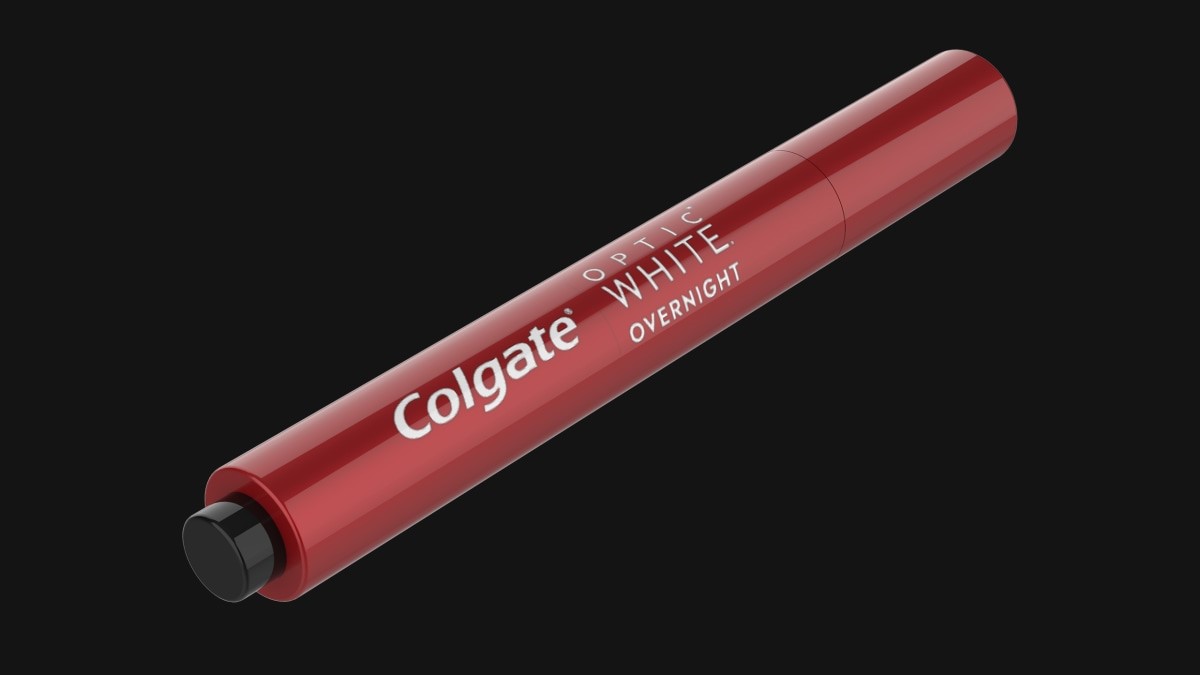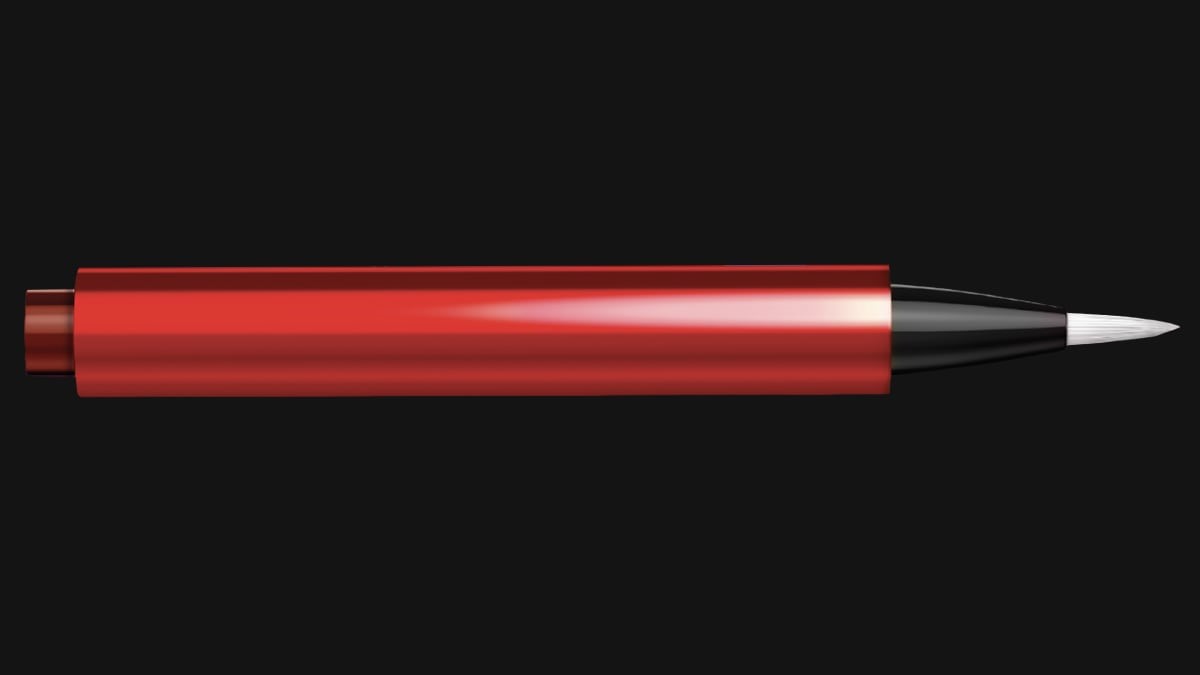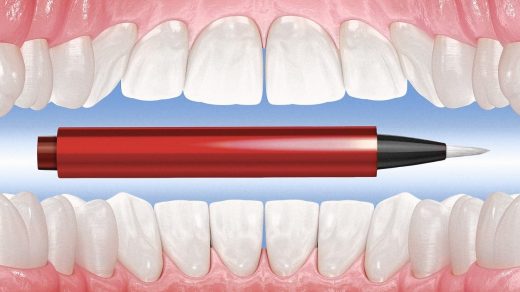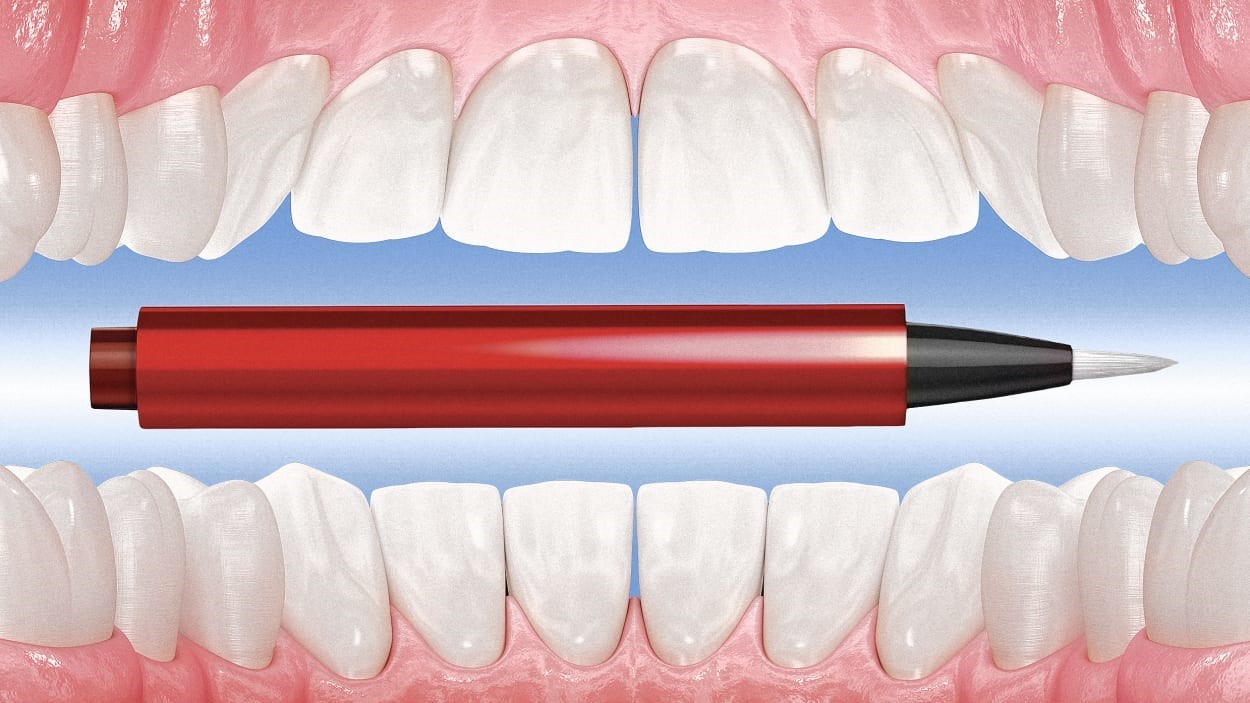Teeth whitening just got a major redesign . . . from the designer behind the Sharpie
Leighton Davies-Smith has built his life around the lowly pen. As a PhD electrochemist, he’s had a four-decade career formulating inks, refining nibs, and designing the tubular handheld devices that allow people to jot notes, sign checks, and scribble on walls. He’s worked for some of the most well-known, if workaday, brands in the writing instrument market, including Sharpie, Parker, PaperMate, and Expo.
His work has informed the highlighter a college student uses to mark up a textbook, the permanent marker a construction worker uses to indicate cuts on lumber, and the basic ballpoint pens a gainfully employed journalist can’t help swiping from hotel rooms. Even in a highly digital world of email and autofill, consumer pen design is a stalwart expertise that’s kept Davies-Smith employed for more than 30 years.
Increasingly, he’s applying his expertise to a new kind of handheld writing instrument: pens designed specifically for whitening teeth.
From writing to whitening
About eight years ago, Davies-Smith was contracted to advise the household and consumer goods conglomerate Colgate-Palmolive on an emerging product class. Davies-Smith had been hopping around the world, working with companies as an expert consultant on pen design and ink chemistry, and Colgate-Palmolive had, essentially, similar needs. “They were interested in transferring liquids in a controlled way from one place to another and didn’t quite know how to do it,” Davies-Smith says.
The liquid they were trying to transfer was a specially formulated hydrogen peroxide-based gel that had become the basis of a wide range of store-bought teeth-whitening products, from mouthguard-like trays to slimy films wrapped on the teeth like a tiny bandage. Colgate-Palmolive called on Davies-Smith to help figure out how that liquid could be applied directly to the teeth with no extra infrastructure. They needed the liquid—essentially a bleaching agent—to flow at just the right rate from the hands of untrained consumers.
For Davies-Smith, the challenge was both new and completely familiar. “I had zero experience in oral care previously,” he says. But controlling liquid flows was basically the subject of his entire career in pen design. “Ballpoint pens, roller balls, gels—they are all designed as controlled leaks.”
Within a year, Davies-Smith was hired as a senior technical director at Colgate-Palmolive, and his pen-design skills are the basis of what’s now on the market as the Optic White Overnight Teeth Whitening Pen.

A very different substrate
The mechanics of getting liquid to flow out of a pen, be it ink or bleach, were well known to Davies-Smith. The target of that liquid, though, was a completely new territory.
“Almost without exception, the substrate that a pen would be writing on would be dry,” he says. A teeth-whitening pen would essentially be writing on a surface covered with saliva. “We’re now operating in the oral cavity. It doesn’t matter how much you try and dry things.”
Getting the teeth-whitening formula to flow was a problem reminiscent of his work on the Sharpie permanent marker. The ink in a Sharpie, Davies-Smith says, is alcohol-based as is the gel in the teeth-whitening pen. Because alcohol evaporates quickly, both pens require a formulation that can be absorbed very quickly—on paper and other porous surfaces for Sharpies, and on teeth’s porous enamel surface for the Optic White pen. As a result, the tip, or nib, of the teeth-whitening pen is not too different from that of a Sharpie.
This race against evaporation also meant that, like a Sharpie, the Optic White pen would need to have an airtight seal when not in use. Davies-Smith helped the company determine the shape of the body of the Optic White pen. He also helped figure out that the pen would best keep its seal on the whitening gel by having the user control its flow through a familiar pen-click motion.

Holistic design
Davies-Smith is uniquely suited to thinking about all these various design and mechanical elements—from the design of the nib to the liquid’s chemistry to the ergonomics of the pen body. That’s partly because he’s seen when these elements don’t work together.
Recalling one of his first projects in the pen industry in the late 1980s, Davies-Smith says he was working as an ink formulator on a project that quickly went sideways. He was tinkering with the chemistry of the ink while another person was developing the physical design of the feeding system that would pull the ink to the nib and control its leak when the pen touched paper. “We were working independently of each other in the hope that when we brought those two elements together, everything would be hunky dory,” he says. “It was not.”
That led him to regard the pen more holistically as a mix of chemistry, mechanics, ergonomics, design, and user experience. “Pen, P-E-N, is too small a word for the technology that goes into a writing instrument,” he says. “I think ‘a handheld precision dispenser of on-board chemistry is a better description’ . . . but nobody’s going to use that.”
Whether creating a pen for writing or one for teeth-whitening, the basic parameters remain the same, he says. “The chemistry has to do its work, and the pen has to meet the chemistry halfway so you have a whole that’s aesthetically pleasing and delights end users,” he says. “When you’ve got all those elements together, you’ve got a satisfactory product.”
Beyond white teeth
And those ingredients may add up to more than just teeth-whitening. Davies-Smith says Colgate-Palmolive is currently looking at ways of applying the mechanics and chemistry at the core of the Optic White pen to other products under its large umbrella, which include personal hygiene products and a wide range of household cleaners. “We have a number of categories in Colgate, and we’re considering all those for what we might be able to do with such a platform,” he says.
It’s already led Davies-Smith to invent a new product for Colgate, the Optic White ComfortFit LED Teeth Whitening Kit, which uses a mouth-shaped panel of lights to speed up the activation of the bleaching agent in the gel. Understanding the chemistry behind the whitening formula in the pen, Davies-Smith saw a way to help the pen work even better.
Still, it’s a big difference from the complex but straightforward process of putting pen to paper. “This is not an instantaneous result. I’m not getting a mark on paper. I’m not getting whiter teeth the moment this tip from the product touches the enamel,” Davies-Smith explains. “We’d love to be there and we’re working towards that.”
All it will take is a well-designed handheld precision dispenser of on-board chemistry.
(4)



